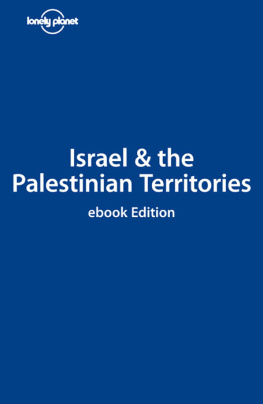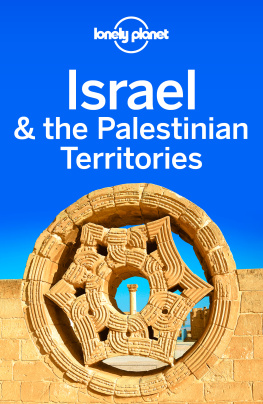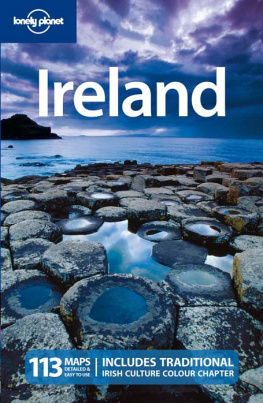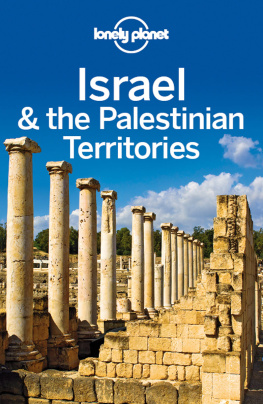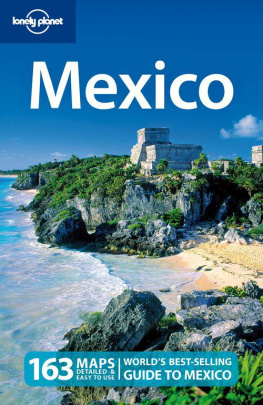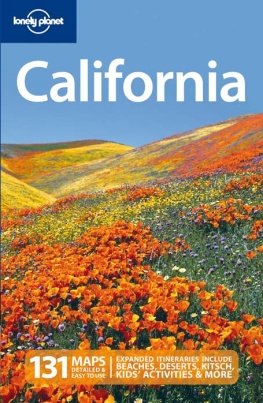Destination Israel
& The Palestinian
Territories
Its hard to believe that Israel, a country a little smaller than the state of New Jersey, along with the even tinier Palestinian Territories, has so often taken centre stage in world politics, religion and news headlines. But with Jerusalem at the regions disputed heart, the Golan Heights at its disputed head and Gaza dipping its disputed toe into the crystalline Mediterranean Sea, its not difficult to see why.
A trip to Israel and the Palestinian Territories, whether you come for the spiritual, the political or the decidedly hedonistic, is a fast-paced ride that will undoubtedly challenge your preconceptions. In this beautiful, friendly, yet deeply troubled land, you can ponder the foundation stones of Christianity, the promised land of the Jews and some of the holiest places in all Islam. Bathe in three seas the Med, the Dead and the Red or do a spot of breaststroke in a fourth, where Jesus is said to have once walked on water. Hike mountain trails, shifting dunes, desert craters and windswept wadis. Marvel at ancient fortresses and consider contentious modern security walls. Take to the ski slopes in the morning, and snorkel with dolphins in the afternoon.
Attractions aside, its undeniable that the place and its people are characterised by a tragic, turbulent and complex history. Since Israel came officially into existence in 1948, peace in the Holy Land has proven as occasional an occurrence as it was throughout medieval and ancient history. Many Palestinians assert that Israels creation, known to them as al-Naqba (the Catastrophe) has robbed them of their legally owned property, and, more importantly, of their historic homeland. Jewish Israelis, meanwhile, struggle with the legacy of their own mid-20th-century tragedy: the horrific WWII Holocaust, which saw the murder of millions of Jews at the hands of the Nazis. Both Israelis and Palestinians consider home, therefore, to be this tiny sliver of land at the heart of the Middle East, and as yet no one has been able to persuade them to live amicably together, or peaceably side-by-side.
Thats not to say, however, that no one has tried. In 2002 former US president George W Bush outlined a Roadmap to peace, drawn up by an international quartet comprising the US, European Union, UN and Russia. The Roadmap envisaged a two-state solution, with an independent Palestinian state existing as a cordial next-door neighbour to Israel. The small print involved the Palestinian Territories renouncing the use of violence against Israel and embracing democratic reform; Israel, meanwhile, would recognise the Palestinian government and freeze ongoing Jewish settlement construction in the Palestinian Territories. Divided into three key phases, the plan was to have the whole thing settled with final borders drawn up and hands shaken across the Arab world as early as 2005.
But, as that canny Scot Robert Burns once said, The best laid schemes of mice and men, Gang aft a-gley. Israeli and Palestinian leaders followed the Roadmap with about the accuracy of a reckless Middle Eastern driver. Though 2005 saw the dismantling of all Israeli settlements in the Gaza Strip under the supervision of former Israeli prime minister Ariel Sharon, settlement construction within the West Bank carried on and the death toll from Israeli army operations and Palestinian terror attacks continued to mount. Just a year after the Gaza disengagement, Israeli soldier Gilad Shalit was captured by Palestinian militants, and three days later Israel Defence Forces (IDF) launched Operation Summer Rain, which left hundreds of Gazans dead.
FAST FACTS
Population: Israel 7.2 million (including 187,000 West Bank settlers), West Bank 2.5 million, Gaza 1.6 million
GDP growth (2008): Israel 3.9%, Palestinian Territories 0.8%
GDP per capita (2008): Israel US$28,200, Palestinian Territories US$2900
Israels major exports: high-tech equipment, cut diamonds, fruit and vegetables
Unemployment rate (2008): Israel 6.1%, West Bank 16.3%, Gaza Strip 41.3%
Religion: Israel 76.4% Jewish, 16% Muslim, 2.1% Christian, 1.6% Druze, 3.9% unspecified; West Bank 75% Muslim, 17% Jewish (Israeli settlers), 8% Christian and other; Gaza Strip 99.3% Muslim, 0.7% Christian
Tourists to Israel in 2008: about 2.8 million
Israels air force: the worlds fourth largest (after the USA, Russia and China)
Israels business world: boasts the highest number of companies on the New York Stock Exchange, after the USA and Canada
Lowest spot on earth: Dead Sea (400m below sea level and dropping)
And the struggles in Gaza did not end there. In 2007 Hamas paramilitary forcibly ejected political rival Fatah from security and civil service positions. The fierce subsequent infighting has led some international onlookers to question whether Palestinians are capable of creating the united front necessary for independent statehood. Meanwhile, many West Bank Palestinians have watched with horror as events have unfolded in Gaza, and felt a cultural gap between the two communities steadily emerge.
But Gaza is just one element of a picture composed of infinite shades of grey. Though the Jewish IsraeliMuslim Palestinian conflict is a world headline favourite, its crucial to remember that numerous other communities also exist in both places. Take, for example, the Israeli Arabs pre-1948 Palestinians by another name who, for one reason or another, remained after the creation of the Israeli state. These Muslim and Christian people have a complex legacy, pitting their allegiance to their homes in Israel against their allegiance to their Palestinian families or Muslim brethren.
Then there are the Palestinian Christians who inhabit Ramallah and Bethlehem and the surrounding area, and who frequently feel little allegiance to either Fatah or Hamas: many instead have chosen to emigrate to safer climes such as Scandinavia, Canada or elsewhere. There are also Bedouin Muslims, inheritors of a fast-disappearing nomadic lifestyle, whose semi-permanent desert homes often fall prey to demolition orders from Israel; and smaller, unique communities of Samaritans, African Hebrew Israelites, African Muslims and Circassians, each with their own specific set of beliefs, priorities and customs. In addition, there are the mountain-dwelling Druze whose religion is a sort of mystic combination of Islam and Christianity and, in Jerusalem and around, are Armenian, Coptic and Greek monks, nuns and permanent pilgrims galore.
Its this heady mix, alongside the regions more obvious historic and religious attractions, which makes Israel and the Palestinian Territories such a bewitching destination. Hike, sunbathe, shop, gaze and dine your way about the region, by all means, but, most importantly, talk to the people behind the attractions, tragedies and headlines. Strike up conversations with Orthodox Jews and Israeli Arabs, with Russian and Ethiopian immigrants and with unconventional, unreligious urbanites. Take time to meet the children of refugee camps and the teenage soldiers, and the peace activists and protest groups who people this complex and beleaguered landscape. Its by far the best way to glean an inkling of the truth lurking behind the persuasive propaganda, and to discover for yourself why Israel and the Palestinian Territories complicated, volatile but intoxicating reputation far outstrips its geographical size.
Getting Started
Sometimes fun, sometimes fraught, sometimes frustrating but always fascinating. If you arrive with an open mind, travel within Israel and the Palestinian Territories is likely to be some of the most rewarding and illuminating youll ever undertake. With a varied but generally temperate climate and a calendar full of celebrations Muslim, Jewish and Christian alike any time here is a good time to travel. Even during the Muslim fasting month of Ramadan, when the daylight Palestinian pace might be slow, the nights are filled with festivities and feasting.

